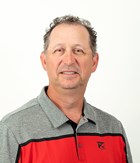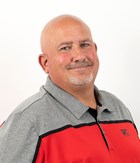Key Reminders for Planting Corn
BY Dairyland Seed Agronomy Team
Planting Depth
Plant 1.5 to 2 inches deep. Due to cooler soil temperatures or fluctuations in moisture in the seed zone, planting less than 1.5 inches deep, depending on weather and soil conditions, increases the probability of the corn seed not germinating. (I prefer to be closer to 2 inches for planting depth, and this is after the soil has been compressed to simulate the soil and planting depth after a rain or when the soil settles.)
Corn plants take in 30% of their weight in water during the germination process. By not having the proper planting depth you risk seeds not fully germinating or not having enough moisture to continue to grow. Another forgotten reason to plant 1.5 inches or deeper, is that many herbicide labels state that to safely use that product, corn needs to be planted 1.5 inches or deeper, or injury may occur.
Soil Temperatures
Plant when soil temperatures are 50°F or more, or when air and soil temperatures will be increasing to that level or more. Corn can germinate with temperatures less than 50°F, however germination is more consistent at 50°F or more. If soil temperatures are in the low 40°F or less, you can increase the incidence of Imbibitional Chilling Injury or Cold Shock Syndrome, which can kill plants and subsequently reduce plant populations/harvestable ears. Cool wet soils increase the incidence of crown rot as well as seedling diseases.
Starter
I recommend utilizing a quality liquid starter and zinc to help the plant have an energy source (phosphorus in the starter) and the ability to help move nutrients and protect the germination process (zinc). It has been my experience that a quality starter and zinc help the corn “pop up” out of the soil and have better early season growth. It is also my observation that this early season growth translates to earlier tasseling and more consistent pollination which, in most cases, leads to increased yields, better test weight and dry down.
Plant Populations
My typical recommendation is to plant 1000-1500 more seeds than what is desired for a harvestable stand. Part of this is that not every seed will germinate, as well as:
- Less than ideal planting seedbed
- Hail/brittle snap
- Wildlife I.E. racoons, skunk, geese, turkeys, deer, grazing cattle and in some southern states wild hogs may eat seeds or seedlings
- Seed and seedling diseases
- Soil types
The ability to variable rate plant has changed how we handle some of these issues, and is a tool that provides a better Return on Investment, than increasing the seeding rate across the entire field.
If you have questions or concerns regarding this please contact your Dairyland Seed Representative or Agronomist.

Brian Weller
Western Region
507.456.3034

Rod Moran
Western Region
507.456.3034

Dan Ritter
Central Region
219.863.0583

Branden Furseth
Northern Region
608.513.4265

Mark Gibson
Eastern Region
260.330.8968

Amanda Goffnett
Eastern Region
989.400.3793

Ryan Mueller
Eastern Region
989.400.3793
